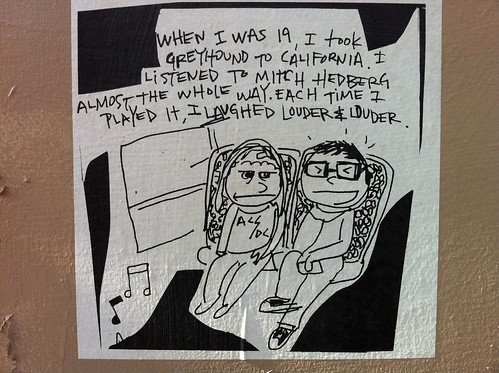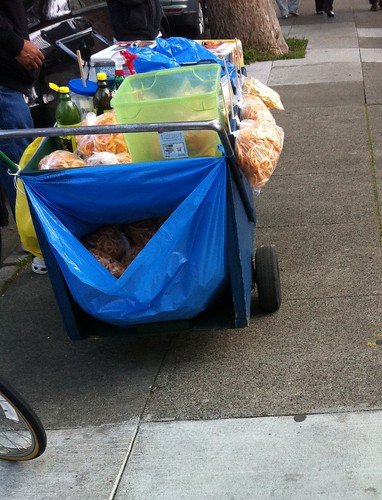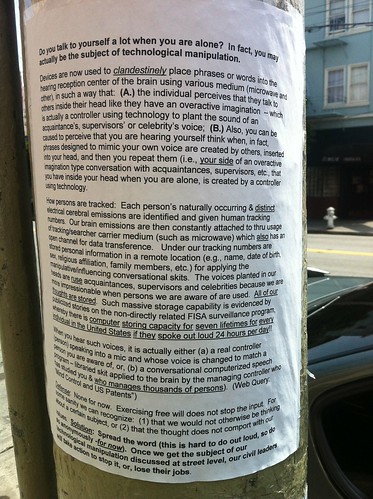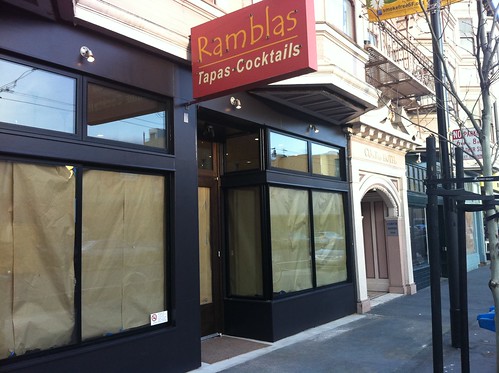
Spotted at 15th and Valencia.


Next to the lengthly-named San Francisco Lesbian Gay Bisexual Transgender Community Center is a construction site that has not seen much activity in recent years. It’s become a bit of an eyesore, with a giant pit surrounded by a fence, and a massive (and expensive-looking) crane stand tall above the site.
Due to recent rain, the pit has begun to fill up with water. I’ve dubbed this mosquito-breeding ground Lake Market, after the street it borders. With a bit more rain, perhaps we can all go for a boat ride on Lake Market.

The former site of Artist Xchange on 16th St. is now painted black and papered over, and will soon become yet another overpriced t-shirt store.
This is great news for people who enjoy buying expensive t-shirts, but are bored of shopping at Candystore, HANGR 16, Skunk Funk, NO, Nooworks, Density, or any of the other dozen or so similar clothing shops located within a stone’s throw of 16th and Guerrero.
You can get an idea as to the inventory of products (which the designer seems to mistakenly believe are artistic) here.

You can make creme brulee or pizza on the street corner and call it street food. But while it might be tasty, it’s still not street food — it’s just kitchen food made in an uncomfortable outdoor setting.
On the other hand, a cart filled with chicharrónes in plastic bags, with various flavorings? Now THAT is street food. It’s authentic, it’s cheap, and it’s good. But it’s not gourmet restaurant food, and it doesn’t pretend to be.
This food cart would have fit right in down in Mexico City. It makes one realize what a shame it is that we don’t have folks selling homemade sorbet on street corners here in SF.
Ever wonder why people are afraid of the “radiation” coming out of cell phone towers and Smart Meters? This explains why.

Almost seems as though some schizophrenic person saw the ads for Elsewhere Public Works and thought it was real.
Spotted at 16th and Valencia.
And say hello to the new exterior for Locanda, which for some reason still has a sign for Ramblas.

The opening date was pushed back to March, but clearly that didn’t happen. Anyway, us pedestrians are sure to be thankful that the plywood is gone.
Travel, movies, comedy, tech, and whatever I find on the streets of San Francisco.
Follow this blog with RSS or on Bluesky.
Contact: mrericsir “at” gmail.com
16thmission ameritrip2019 art bart cats chicago clarionalley coffee covid-19 dolores park europe film food graffiti greece gregg turkington history humor immersive los angeles mission movies muni munimetro murals museums Music nonchalance northbaytrip2019 on cinema photos public transportation Rant restaurants san diego san francisco soma streetart television the jejune institute tim heidecker trailers travel videos wtf